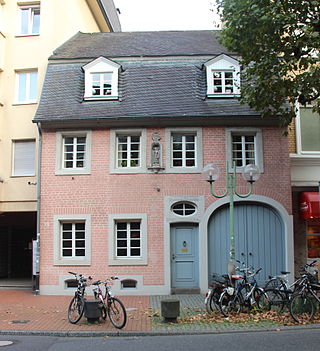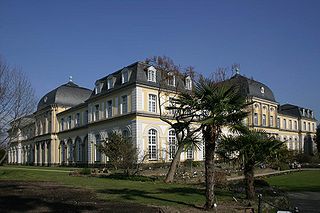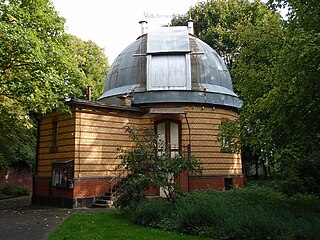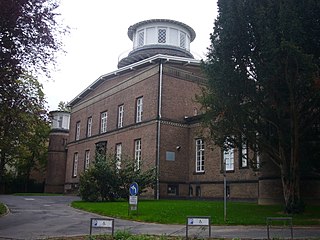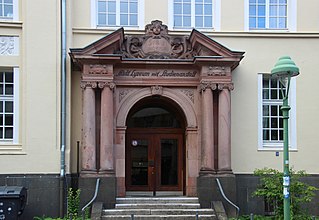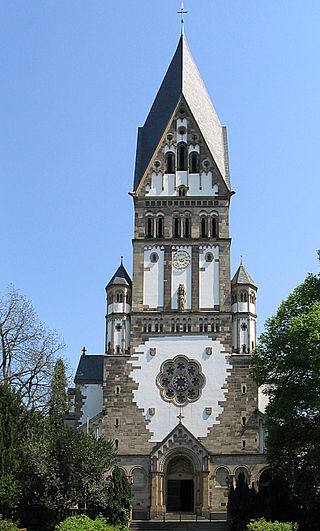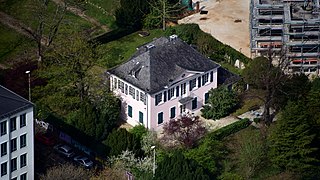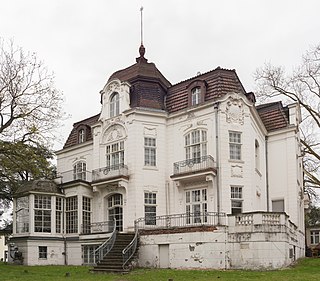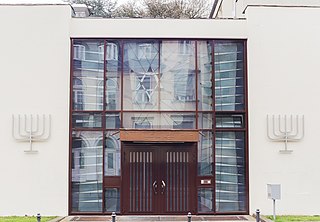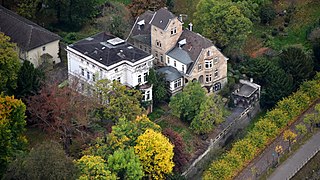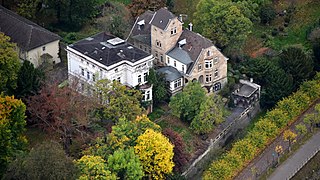Self-guided Sightseeing Tour #11 in Bonn, Germany
Legend
Guided Free Walking Tours
Book free guided walking tours in Bonn.
Guided Sightseeing Tours
Book guided sightseeing tours and activities in Bonn.
Tour Facts
6.8 km
153 m
Experience Bonn in Germany in a whole new way with our free self-guided sightseeing tour. This site not only offers you practical information and insider tips, but also a rich variety of activities and sights you shouldn't miss. Whether you love art and culture, want to explore historical sites or simply want to experience the vibrant atmosphere of a lively city - you'll find everything you need for your personal adventure here.
Activities in BonnIndividual Sights in BonnSight 1: Marterkapelle
The Marterkapelle, also known as Mordkapelle, is a church building built between 1719 and 1721 in the Bonn district of Endenich at the foot of the Kreuzberg, which belonged to a Benedictine monastery from 1888 onwards, together with other buildings. The chapel is located a short distance from the Kreuzberg church and is part of the former monastery as an architectural monument under monument protection. After the dissolution of the Benedictine convent in 2001, the buildings have been used since 2002 as the Redemptoris Mater seminary under the auspices of the Archdiocese of Cologne.
Sight 2: Friedhof Poppelsdorf
The Poppelsdorf Cemetery is a municipal cemetery in the Poppelsdorf district of Bonn, Germany.
Sight 3: Kurfürstliches „Wasserträgerhaus“
The electoral "Wasserträgerhaus" in the Bonn district of Poppelsdorf dates from 1750 and is the only surviving residential building from the baroque electoral era of Bonn in the district. The building is located at Clemens-August-Straße 13 and is a listed building.
Sight 4: Botanischer Garten
The Botanische Gärten der Friedrich-Wilhelms-Universität Bonn, also known as the Botanischer Garten Bonn, is a botanical garden and arboretum maintained by the University of Bonn. It is located at Meckenheimer Allee 171, Bonn, North Rhine-Westphalia, Germany, and open except Saturdays in the warmer months; admission is free.
Sight 5: Volkssternwarte
The Volkssternwarte Bonn is an astronomical observatory in Bonn, Germany. It is located on the grounds of the Old Observatory of the University of Bonn in the Südstadt.
Sight 6: Alte Sternwarte
The Old Observatory in Bonn is a historic observatory from the 19th century. It is located in the Südstadt at Poppelsdorfer Allee 47. It was founded by Friedrich Wilhelm August Argelander. Both the main building and a stand-alone telescopic dome on the property ("refractorium") are listed as architectural monuments. In 2018, the Old Observatory was also included in the list of "Outstanding Astronomical Heritage" of the International Astronomical Union.
Sight 7: Clara-Schumann-Gymnasium
The Clara-Schumann-Gymnasium of the City of Bonn is a grammar school in Bonn's Südstadt in Loëstraße. The school is run by the city of Bonn. It is attended by around 1000 students.
Sight 8: Karl Hanau
The list of Stumbling Stones in Bonn contains Stumbling Stones that were laid in Bonn as part of the art project of the same name by Gunter Demnig.
Sight 9: Sankt Elisabeth
St. Elisabeth is a Roman Catholic parish church in Bonn, Germany. The church is dedicated to St. Elisabeth of Thuringia. It is a listed building.
Sight 10: Ernst-Moritz-Arndt-Haus
The Ernst-Moritz-Arndt-Haus in the Bonn district of Südstadt was built for the poet Ernst Moritz Arndt.
Sight 11: Villa Finkler
The building Tempelstraße 10 is a villa in the Bonn district of Gronau, which was built in 1900/01. It is located on Tempelstraße, which branches off from Adenauerallee (B 9) above the banks of the Rhine (Wilhelm-Spiritus-Ufer). The villa is a listed building.
Sight 12: Villa Eschbaum
The building Tempelstraße 8 is a villa in the Bonn district of Gronau, which was built in 1901/02. It is located on Tempelstraße, which branches off from Adenauerallee (B 9), near the banks of the Rhine (Wilhelm-Spiritus-Ufer) opposite the entrance to the property of the Federal Foreign Office. The villa is a listed building.
Sight 13: Synagoge Tempelstraße
The synagogue in the Bonn district of Gronau was built in 1958/59. It is located on Tempelstraße on the northern edge of the Federal Quarter, immediately south of the Federal Foreign Office. It is the only synagogue in the city of Bonn and is a listed building.
Sight 14: Villa Heckmann
The building at Raiffeisenstraße 3 is a villa in the Bonn district of Gronau, which was built in 1896/97. It is located above the banks of the Rhine (Wilhelm-Spiritus-Ufer) in the immediate vicinity of Villa Ingenohl. The villa is a listed building.
Sight 15: Villa Ingenohl
The Villa Ingenohl is a villa in the Bonn district of Gronau, which was built in 1895/96. It is located above the banks of the Rhine (Wilhelm-Spiritus-Ufer) with the address Raiffeisenstraße 5 in the immediate vicinity of Villa Heckmann. The villa is a listed building.
Share
How likely are you to recommend us?
Disclaimer Please be aware of your surroundings and do not enter private property. We are not liable for any damages that occur during the tours.
GPX-Download For navigation apps and GPS devices you can download the tour as a GPX file.


